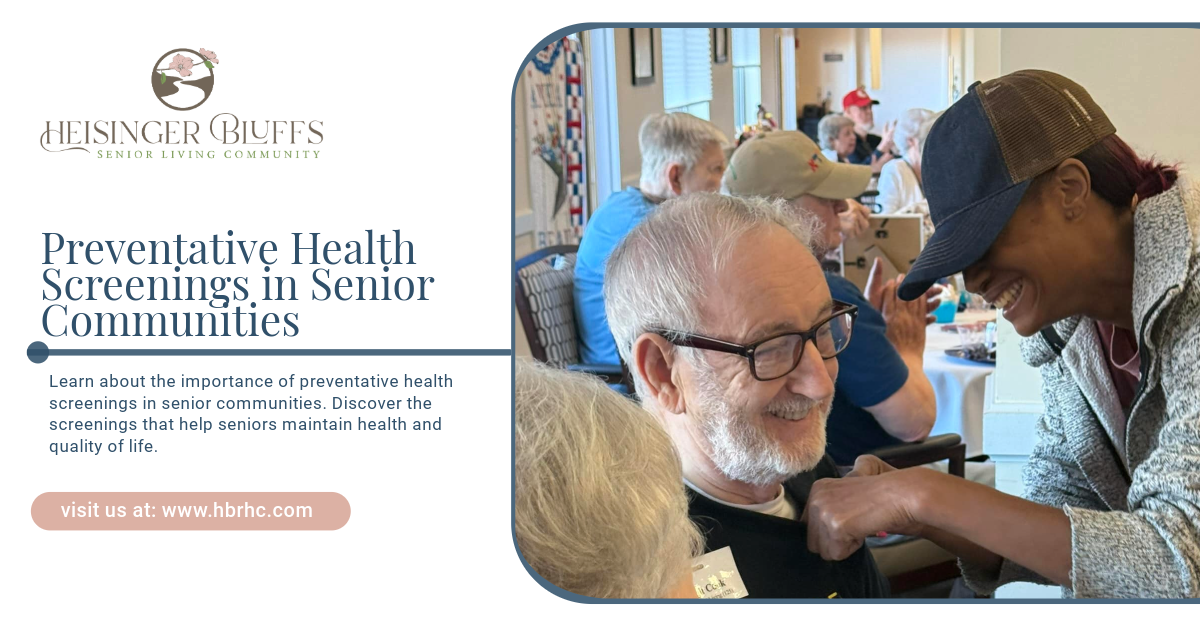Tips for Visiting Your Loved One in Assisted or Independent Living

Visiting a loved one in assisted or independent living can be a deeply meaningful experience for both of you. These visits provide vital emotional connection, help ease the transition into a new lifestyle, and support your loved one's well-being. But if you're new to visiting a senior living community—or unsure how to make the most of your time together—you’re not alone.
Whether your loved one is in assisted living and needs daily support, or in independent living and enjoys a more active lifestyle, thoughtful visits can make a world of difference. The key is to approach your time together with sensitivity, flexibility, and genuine interest in their routine and preferences.
In this guide, we’ll explore practical and heartfelt tips for visiting your loved one in assisted or independent living. From planning your visit to engaging in activities they’ll enjoy, you’ll learn how to make every moment matter.
Why Your Visits Matter
Regular visits provide more than companionship. They:
- Help reduce feelings of loneliness or isolation
- Boost mental and emotional well-being
- Offer reassurance and continuity
- Strengthen your family bond
- Allow you to monitor their health and well-being
Even brief visits can be powerful. The goal isn’t perfection—it’s presence. Knowing you care enough to visit and share time together means everything.
Tip 1: Call Ahead and Know the Community’s Guidelines
Before visiting, give the community a quick call. This helps you:
- Learn about visiting hours or current COVID-19 protocols
- Check if your loved one has any appointments or therapy scheduled
- Coordinate with staff if your loved one needs assistance getting ready
Assisted living communities often have structured routines, and planning ahead ensures your visit fits smoothly into their day. For independent living residents, it’s still courteous to confirm their availability—they might have social plans or wellness classes on their calendar!
Tip 2: Bring Meaningful Items
Bringing a thoughtful gift or item can make your visit more special. Consider:
- Family photo albums or printed pictures
- Favorite snacks or treats (check dietary restrictions first)
- Letters or drawings from grandchildren
- A puzzle, book, or magazine you can enjoy together
- Seasonal décor or small plants for their room
These small tokens show you care and often spark conversation or memories.
Tip 3: Be Fully Present
One of the best gifts you can offer is your full attention. Try to:
- Silence your phone or put it on do-not-disturb
- Make eye contact and engage with genuine interest
- Avoid multitasking or rushing through the visit
Your loved one will notice and appreciate that you’re truly focused on them. This time together doesn’t have to be elaborate—it just needs to be intentional.
Tip 4: Let Them Set the Pace
Every day can feel different for someone in senior living. While one day they may be energized and social, another day they might need rest or quiet. Let them guide the visit.
For independent living residents, they might want to show you around or introduce you to their friends. In assisted living, they might prefer staying in their room, watching a show, or enjoying a quiet meal with you. Being respectful of their energy level and comfort helps the visit feel positive and natural.
Tip 5: Enjoy Simple, Shared Activities
Engaging in activities together creates joy and strengthens your bond. Here are some ideas:
- Take a walk: If mobility allows, explore the community garden or courtyard.
- Play games: Card games, bingo, or board games offer fun and connection.
- Watch a favorite show or movie: Bring popcorn and make it a mini movie night.
- Reminisce: Talk about old family memories, vacations, or look through photo albums.
- Listen to music: Create a playlist of their favorite songs to listen to together.
You don’t have to plan anything elaborate—what matters most is the time you spend side by side.
Tip 6: Include the Grandkids or Other Family Members
Intergenerational visits can be incredibly heartwarming. If you’re bringing younger family members:
- Prepare them ahead of time for what to expect
- Encourage them to bring something to share (a story, drawing, or school project)
- Keep the visit short and sweet—little ones can get restless quickly!
Your loved one will be thrilled to see different generations of the family together, and it helps children develop empathy and appreciation for older adults.
Tip 7: Stay Positive and Supportive
Avoid dwelling on topics that might bring unnecessary stress or sadness. Instead, focus on:
- Celebrating small wins (e.g., “You look great today!”)
- Asking about new friends or recent activities
- Showing genuine interest in their hobbies or routine
If your loved one expresses concerns or frustrations, listen with empathy. You can gently offer reassurance or help follow up with staff after the visit if needed.
Tip 8: Be Sensitive to Their Needs and Emotions
Moving to assisted or independent living can bring up mixed emotions—especially in the early days. Some residents feel relief and happiness, while others may still be adjusting.
If your loved one seems down or disoriented:
- Acknowledge their feelings without judgment
- Offer comfort and validation: “It’s okay to feel this way. I’m here for you.”
- Avoid pushing them to feel or act a certain way
Your presence alone is a powerful form of emotional support.
Tip 9: Plan Special Outings (When Possible)
If your loved one is able and allowed to leave the community for short outings, consider:
- Going out for lunch or coffee
- Attending a local event or church service
- Taking a scenic drive through a favorite area
Even a brief change of scenery can lift their spirits. Just be sure to check with staff first and make necessary arrangements for transportation, mobility aids, or medications.
Tip 10: End on a High Note
As your visit wraps up:
- Express gratitude for the time together
- Share something you’re looking forward to doing next time
- Give a warm hug or gesture of affection (if appropriate)
- Let staff know if anything needs follow-up
Your departure might feel emotional for you or your loved one, but ending with positivity helps make the goodbye easier.
Maintaining Connection Between Visits
You may not be able to visit as often as you'd like—and that’s okay. There are still many ways to stay connected:
- Call or video chat regularly
- Send cards, photos, or small gifts in the mail
- Email updates, family news, or short videos
- Coordinate with other family members to take turns visiting
Consistency is more important than frequency. Even a short call once a week can brighten your loved one’s day and remind them they’re never forgotten.
When to Bring Up Concerns
While visiting, you may notice something that feels off—perhaps your loved one seems unusually tired, confused, or withdrawn. If so:
- Gently ask how they’re feeling
- Take note of any sudden changes in behavior or mood
- Reach out to the care team to share your observations
It’s better to speak up early rather than wait. Staff can assess the situation and ensure your loved one is receiving appropriate support.
Helping Your Loved One Thrive
Your visits are a key ingredient in your loved one’s overall well-being. In assisted and independent living, residents often flourish with social support, a safe environment, and access to enriching activities. But it’s the family connection that truly nurtures the heart.
By showing up with compassion, patience, and love, you help your loved one feel valued and supported—every single time.
At Heisinger Bluffs, we welcome and encourage family visits that foster joy and connection. Whether your loved one resides in independent living or assisted care, our community is built around relationships that matter. We’re here to support residents and their families every step of the way.
Frequently Asked Questions
How often should I visit a loved one in assisted or independent living?
There’s no one-size-fits-all answer. Aim for a frequency that works for both of you—once a week, twice a month, or whatever feels comfortable. Quality is more important than quantity.
What if my loved one doesn’t seem excited to see me?
This could be due to mood, medication, cognitive changes, or adjusting to their new environment. Don’t take it personally. Keep visiting and offering consistent love and support.
Can I bring a pet when visiting?
Some senior living communities allow pets during visits, especially if they’re well-behaved and bring joy to residents. Check with staff beforehand to confirm pet policies.
Sources:
- https://www.nia.nih.gov/health/loneliness-and-social-isolation/loneliness-and-social-isolation-tips-staying-connected
- https://pmc.ncbi.nlm.nih.gov/articles/PMC3242833/
- https://www.who.int/news-room/fact-sheets/detail/mental-health-of-older-adults











